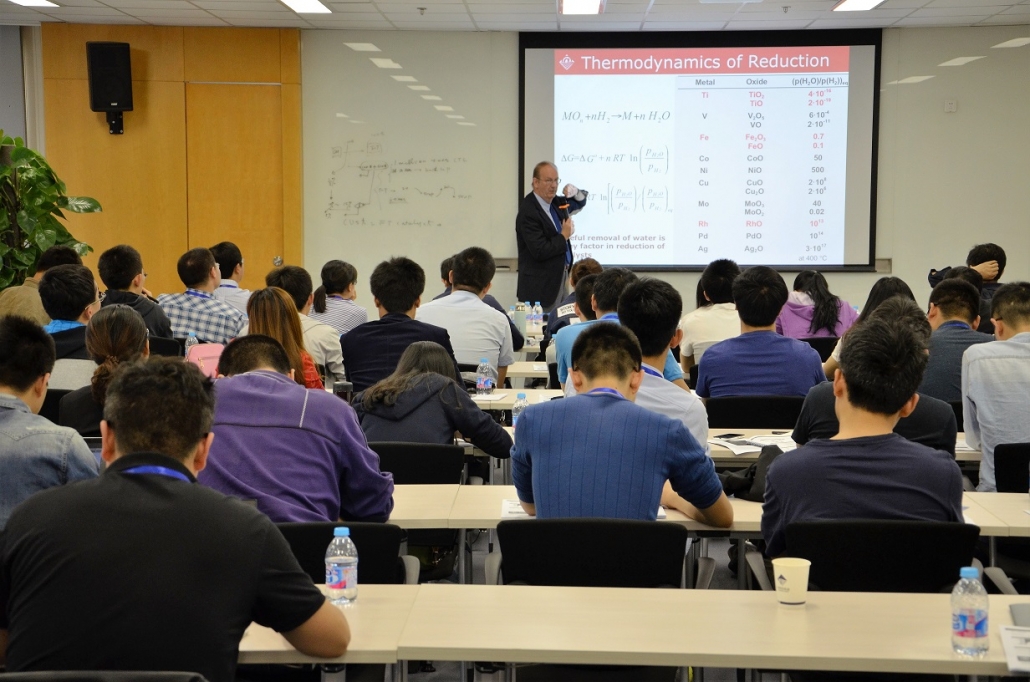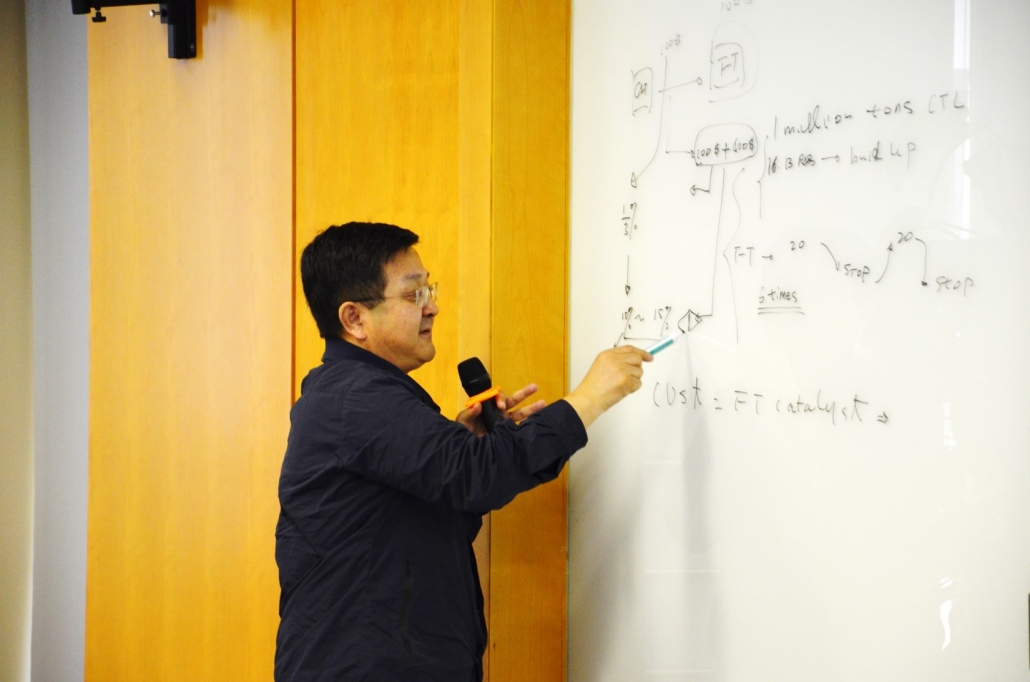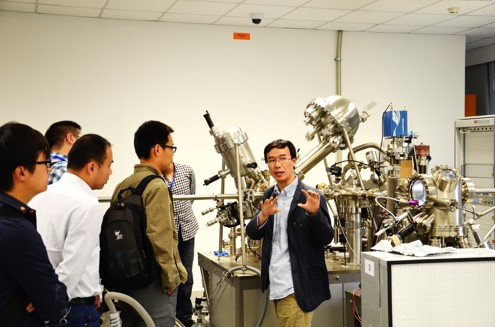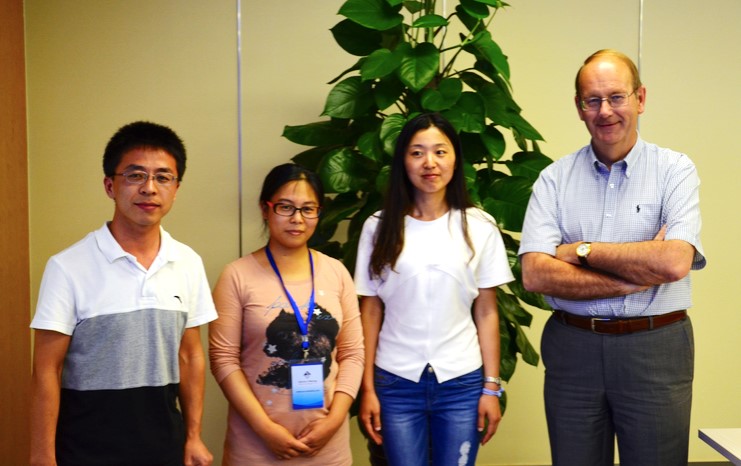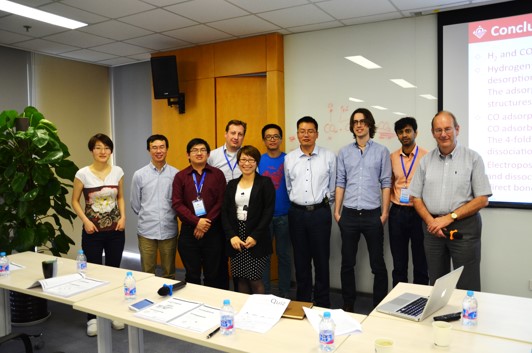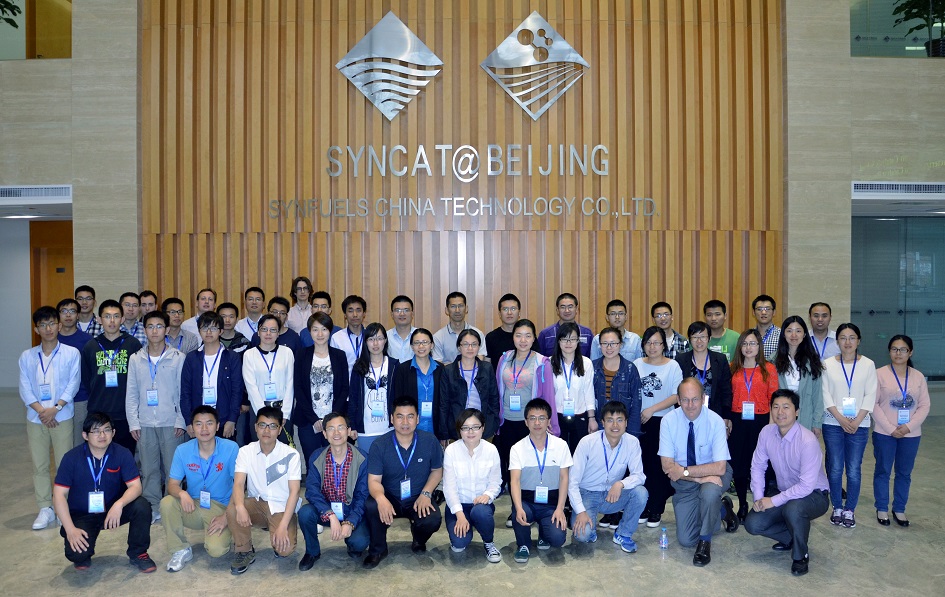Second SynCat Ac@demy Catalysis Characterization School
One of SynCat@Beijing’s parallel goals to achieving world-class catalysis research is also to become a knowledge and expertise centre in the supporting disciplines of our research interests, like in characterization and the surface sciences. To that end, we aim to regularly organize short courses on catalysis, surface chemistry and materials science at the postgraduate level. Following our first successful SynCat Ac@demy autumn school held on 19th-20th Oct 2015, which focused on the understanding of fundamental principles of catalysis and their link with surface science studies, we held our 2nd SynCat Ac@demy Catalysis School focusing on catalysis characterization techniques recently on 9th-10th May, at the SynCat@Beijing Research Institute of Synfuels China Technology. The catalysis school course was enthusiastically supported by Synfuels China and its General Manager Prof Yong Wang Li.
Unlike the first SynCat Ac@demy Catalysis school, this time all the topics are covered by internal speakers from SynCat@Beijing. The talks covered a wide array of characterization techniques significant in catalysis study, aimed at promoting a thorough understanding of individual methods. The 2nd Catalysis school attracted more than 80 registered attendees, about 30 of which were external personnel. As for the 1st Catalysis School, all participants received a course book with copies of the most important slides for all talks, a feature that was warmly received by all participants for both Catalysis schools.
On the first day, the workshop opened with a few brief comments by Prof. Yongwang Li, stressing the importance of understanding and revisiting the basics in any discipline of catalysis study, which can often remind one of previously forgotten ideas and important information that has been overlooked. This was followed by an introductory lecture by Course Director Prof. Hans Niemantsverdriet on catalysis and characterization techniques in general, which was interspersed by interesting insights from Prof. Li on industrial catalysis considerations for practical catalysts, including the many engineering challenges to implementation. These insights emphasized the importance of the various characterization techniques, which are integral to obtaining vital information on practical and model catalysts.
The introductory lecture was followed by a primer on powder X-ray Diffraction by Dr. Yanbin Shen. She started from introducing the development of the XRD technique and required experimental hardware. Then she continued on to how to read a typical diffraction pattern by explaining the peak position, intensity, and peak profile in detail. Finally, she ended the talk with a short introduction to the Rietveld refinement and some available software for performing such refinements.
Course Director Prof. Hans Niemantsverdriet then gave a brief introduction on X-ray absorption experiments, with focus on the power of synchrotron radiation in characterization experiments. He pointed out the important parts of a synchrotron, and then explained the basics of two X-ray absorption experiments, XANES and EXAFS. He finished the lecture with further information on synchrotron experiments available in literature.
Dr. Gilbère Mannie followed with a tutorial on X-ray Photoelectron Spectroscopy (XPS), starting from a discussion of the photoelectric effect and XPS instrumentation, and then explained how to interpret important facets of an XPS spectrum like the wide spectrum, peak shifts and peak intensities. He ended the talk with a few case studies that combined the information from XPS spectra to give important information about different studied systems. The XPS talk was followed by an introduction on Auger Electron Spectroscopy (AES) given by Dr. Ryan Sharpe. Dr. Sharpe introduced the AES technique in three parts. He started from the theory introduction of AES, including the definition and the history of AES, the theory background of Auger effect and the details of the spectroscopy notation and instrumentation. After that, he continued with explaining some advanced adaptations and uses of this technique in the literature, and ended with some literature sources for the audience who want to go further on this technique.
The last talk in the morning section was presented by Dr. Xi Liu, titled “Transmission/Scanning Transmission Electron Microscope: practical application of FEI-Talos X”. Dr. Liu firstly described the sample preparation method for TEM measurement and explained the principle and the instrumentation of a TEM/STEM. He also gave a lot of examples to show the practical application of FEI-Talos X, some of which were done in SynCat@Beijing.
The first day ended after a tour though the laboratories, and all participants joined the dinner in the CFCG Grand Hotel at the premises of the YangSong Film Studios, where Professor Niemantsverdriet gave the prizes to three winners for the small quiz which they received before the lectures started.
The second day of the workshop was filled with lectures which covered a lot of surface science techniques and case studies. Dr. Zhang Tianfu gave an overview lecture on surface science techniques; Dr. Lim Tingbin presented on the use of Scanning Tunneling Microscopy (STM) in surface reactivity studies; Prof. Niemantsverdriet focused on Temperature Programmed Reaction and Desorption; Dr. Ajin Cheruvathur and Dr. Yu Xin lectured on the Raman Spectroscopy and Reflection Absorption Infrared Spectroscopy (RAIRS) respectively; Dr. Zhang Chenghua gave a detailed description on a surface science case study about CO, H2 on Fe-based FT.
Dr. Zhang Tianfu’s talk, titled “How surface science techniques can help to understand the reaction mechanism”, introduced the basic processes in surface reactions related to catalysis, then briefly gave an overview of the plethora of surface science techniques used to study such reactions, and ended with a detailed illustration of how such techniques were used in uncovering the reaction mechanism of ammonia synthesis. In Dr. Lim Tingbin’s talk, titled “Studying Surface Reactivity by STM”, he presented the basic principle of STM and also lot of examples to explain how to use STM to study surface sites and molecular adsorbate reaction. Prof. Niemantsverdriet’s lecture, titled “Temperature Programmed Reaction and Desorption”, described the basic concept of TPD and its application. He especially emphasized on the TPD analysis methods and the application of TPD on uncovering reaction mechanism by supplying case study examples.
Dr. Ajin Cheruvathur’s lecture “Introduction to Raman Spectroscopy”, started from an introduction on theory background and instrumentation of Raman spectroscopy, and then followed with comparison of IR and Raman spectra, and some examples for the applications of Raman spectroscopy. Afterwards, Dr. Yu Xin followed with a similar technique in title “Reflection Absorption Infrared Spectroscopy”, where she explained the principle and instrumentation of RAIRS in detail, illustrated with RAIRS experimental results of molecules on metals surfaces with a few examples.
The last talk of the day, was “CO, H2 on Fe – Surface Science Studies” by Dr. Zhang Chenghua. In this lecture, he firstly gave a brief introduction on Fischer-Tropsch synthesis and the fundamental steps involved in the FT reaction, then he presented highly detailed work on the effects of O, C, S, and K on H2 and CO adsorption on Fe, with emphasis on the fundamental understanding of adsorbate-substrate interactions.
Feedback gathered through forms distributed to the participants and speakers showed that the workshop was again a great success, both from an organizational and content point of view. Participants were mostly very satisfied with the accommodation, food, transportation, course materials provided, as well as the lectures. Many of them felt that they have learnt a lot through these lectures and would like to have more opportunities to attend similar courses organized by the SynCat Ac@demy in the future. Some participants also expressed an interest in more specific topics and named some speakers they would like to see in the future workshops. This information will be valuable to us in helping to determine and improve the organization and overall themes of our next workshop, which will be hopefully happened in the autumn of 2016.
By Yanbin Shen and Tingbin Lim who are researchers at SynCat@Beijing.
Photography: Ajin Cheruvathur.
Published on May 20, 2016

